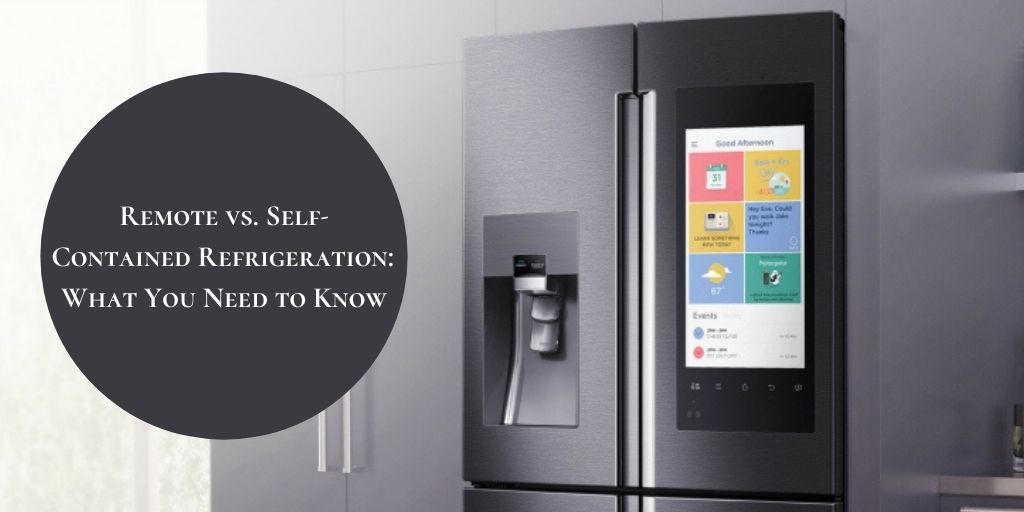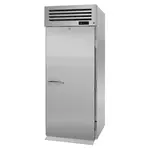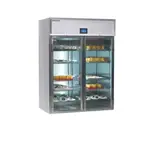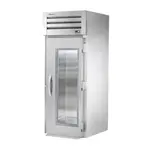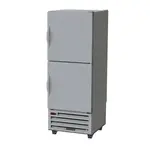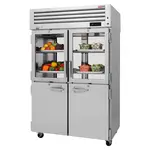Choosing Between Self-Contained vs. Remote Refrigeration Systems
Those who work in both the foodservice and hospitality industries understand that not all refrigeration systems are created equally when it comes to meeting their customer's needs. In most cases, you'll be presented with two options: self-contained refrigeration units or remote refrigeration units.
Proper refrigeration units can be quite a financial investment, so before you make a purchase, it's essential to educate yourself on all your options. If you're debating between a self-contained refrigeration unit and a remote refrigeration system, then you'll want to make sure you know what the difference is between the two.
Self-Contained Refrigeration Systems
The simplest way to describe a self-contained refrigeration system is a unit with all its functional components housed within itself. Many commercial refrigerators utilized in the foodservice and hospitality industry are self-contained systems because they are the simplest to maintain for most.
These units require a liquid coolant/refrigerant, which will be moved throughout the system to help keep the unit and all items housed within it cool.
The process begins at the expansion valve, where pressure causes the coolant to expand and causes it to transform into a gaseous state. Once in this state, coolant is moved through the valve and enters the evaporation coils and then your chiller cabinet. At this point, the coolant begins to boil, and any remaining liquid coolant is transformed into a gaseous state. This is important because, as a gas, the coolant can absorb any heat inside your refrigeration cabinet, allowing the items to cool down to the temperature that you've set the thermostat at.
Once the gas has absorbed the excess heat, it's then cycled into the unit's compressor and then squeezed into the condenser coils, where the coolant is returned to its liquid state, and the process can begin anew.
Remote Refrigeration Systems
Remote refrigeration systems also referred to as remote condenser units, are refrigeration systems that require an external unit that houses the compressor, condenser, and receiver.
While the cooling process is the same as that of a self-contained refrigeration unit, it can often take longer to cool the chiller cabinet upon initial startup. This is because the system has to work harder to move the cooling agent from the chiller cabinet and evaporator through the necessary ductwork to the external unit that houses the compressor, condenser, and receiver before cycling it back through to the chiller cabinet.
Pros and Cons of Remote Refrigeration Systems and Self-Contained Refrigeration Systems
When choosing between a remote refrigeration system and a self-contained refrigeration system, it's crucial you take the time to consider the pros and cons of each option. Once you've done so, you will be able to make a fully informed, confident decision.
Self-Contained Refrigeration Systems: Pros and Cons
When it comes to refrigeration systems for the vast majority of those working in hospitality and foodservice industries, you'll most likely find self-contained refrigeration units being used, especially when it comes to restaurant refrigerators and refrigerators use in hotels.
This is because self-contained refrigeration systems are easier to maintain since everything is located within the unit itself, but they often have a smaller footprint and are easy to relocate when the need arises.
However, one thing you'll want to consider is that these units can produce quite a bit of heat while running. Since all the unit's functioning parts are housed within the unit itself, that means it can create a lot of heat as it works to keep your chiller cabinet cool. Without the proper ventilation in place, that can mean that the room in which your refrigerator is housed can become uncomfortable and retain quite a bit of heat. This is also worth noting because you may notice higher utility bills as you may need to run your air conditioning unit more frequently to keep the room where your refrigeration system is housed cool enough to work in.
Another thing to consider when it comes to self-contained refrigeration systems is that the evaporator and condenser can be noisy, making them unideal for open concept kitchens or smaller concession areas for guests at hotels.
Remote Refrigeration Systems: Pros and Cons
When it comes to those working in the foodservice industry, those who have to house large amounts of food will want to consider remote refrigeration systems. For instance, grocery stores, delis, and even larger commissary kitchens in hotels and resorts utilize these units because it allows them to bring in more goods without:
- Overheating a space
- Raising electric costs by requiring the space continuously run the AC unit to keep it cool
- Overheating the machine's components
Many establishments prefer remote refrigeration systems because the condenser is located outside of the unit, helping to keep the noise emitted from the unit to a minimum. That means your customers or visitors won't be disrupted as they enjoy their meal or peruse your commissary.
Another noticeable difference between remote refrigeration systems and self-contained systems is that several of these units' components are located outside of the main housing. They are then connected by ductwork to a separate unit either on the roof of the establishment or in the basement. This allows the unit to run without generating too much heat, thereby avoiding a number of malfunctions.
Unfortunately, because these systems require two separate units, they are often more costly to install and repair as it involves more work and materials to ensure that everything is working as it should. Of course, they also require more space, making them unideal for small establishments.
Choosing Between Remote and Self-Contained Refrigeration
When it comes time to choose between a remote refrigeration system and a self-contained refrigeration unit, there are many things you'll want to consider. If you’re not quite sure where to begin, here are a few questions to ask yourself:
- What's your current budget? Is there wiggle room for any extra installation needs/charges?
- What kind of space do you have to work with?
- How much ventilation does your current space have?
- Does your location have the necessary space required for a remote refrigeration system?
- Will noise level be a factor in your decision?
Of course, these are only a handful of questions to help you in making your final decision. However, they are some of the most important ones you'll want to consider before you make the necessary investment in the ideal refrigeration system for your particular needs.
Self-contained and remote refrigeration systems are both excellent options for those working in the hospitality and foodservice industries. You just want to make sure you are taking adequate time to research your options so you can make a fully informed, confident decision.

